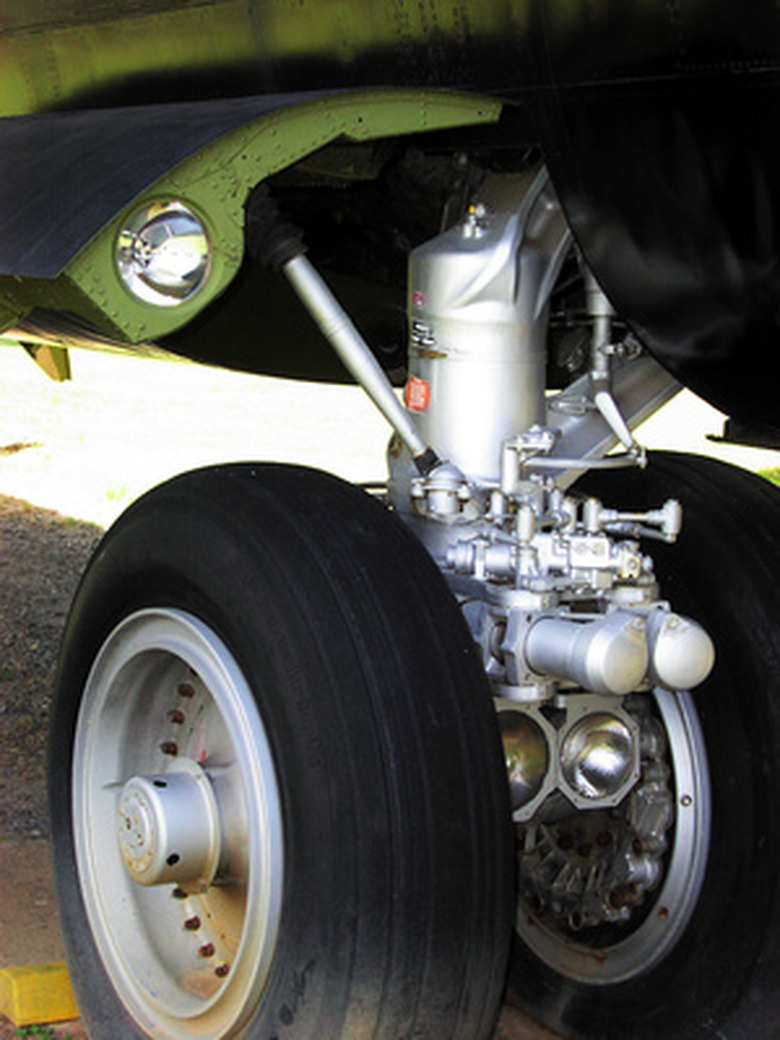Properties & Uses For The 4340 Grades Of Steel
Steel alloy 4340 provides a good balance between strength and malleability. It is used in making gun parts, engine parts such as pistons, gears and bearings, and aircraft parts such as landing gear. With proper working and strengthening, items made from 4340 have excellent wear and durability qualities.
Composition
Steel alloy 4340 is composed of (descending in order by weight): iron, nickel, chromium, manganese, carbon, molybdenum, silicon, phosphorus and sulfur. It can be hardened by a heat treatment followed by an oil quench, or simply by working it while cold. 4340 has average density for a steel alloy, melts at a relatively high temperature (2,600 degrees Farenheit) and is malleable enough to be "cold worked," or worked in a non-heated state. Once it has been annealed (heated to a set temperature — 1550 degrees Farenheit for 4340 steel — and allowed to cool slowly) it does not need to be worked hot and will retain more elasticity than if it is hardened (heated and quenched in oil). It is not an efficient conductor of heat and will retain its shape fairly well when exposed to average temperatures.
Uses
Steel of the alloy 4340 can be heat treated (heated to a set temperature for the particular material and then quenched) using an oil quench to increase the alloy's strength. 4340 can also be annealed (heated to a set point and then allowed to cool, which realigns the internal molecular structure to make the metal stronger) which imbues this steel with excellent durability. Due to this increased durability, it is frequently used to craft aircraft landing gear, automotive transmission gears and parts and gun parts — parts that must withstand high pressures or repeated stress.
Working
4340 steel can be worked after annealing or before, although machining is more difficult when the steel has not been annealed. It can be machined using all normal methods, such as rolling, pounding or pressing.
Welding
4340 steel should be heated before and after welding to ensure strong seams. Either fusion welding, which involves melting the two surfaces together, often with a filler material to enable the bond, or resistance welding, which uses electricity and pressure to create the weld, should be used.
References
- Metal Suppliers Online: 4340 Alloy Steel Material Property Data Sheet
- Welding Engineer: Resistance Welding
- Jefferson Lab: What's the Melting Point of Steel?
- Technologystudent: Annealing Metals
- Matweb: AISI 4340 Steel, oil quenched 855°C (1570°F), 230°C (450°F) temper for 4 hrs., tested at -195°C (-320°F)
Cite This Article
MLA
Mitchell, Kaite. "Properties & Uses For The 4340 Grades Of Steel" sciencing.com, https://www.sciencing.com/properties-uses-4340-grades-steel-7959815/. 24 April 2017.
APA
Mitchell, Kaite. (2017, April 24). Properties & Uses For The 4340 Grades Of Steel. sciencing.com. Retrieved from https://www.sciencing.com/properties-uses-4340-grades-steel-7959815/
Chicago
Mitchell, Kaite. Properties & Uses For The 4340 Grades Of Steel last modified March 24, 2022. https://www.sciencing.com/properties-uses-4340-grades-steel-7959815/
